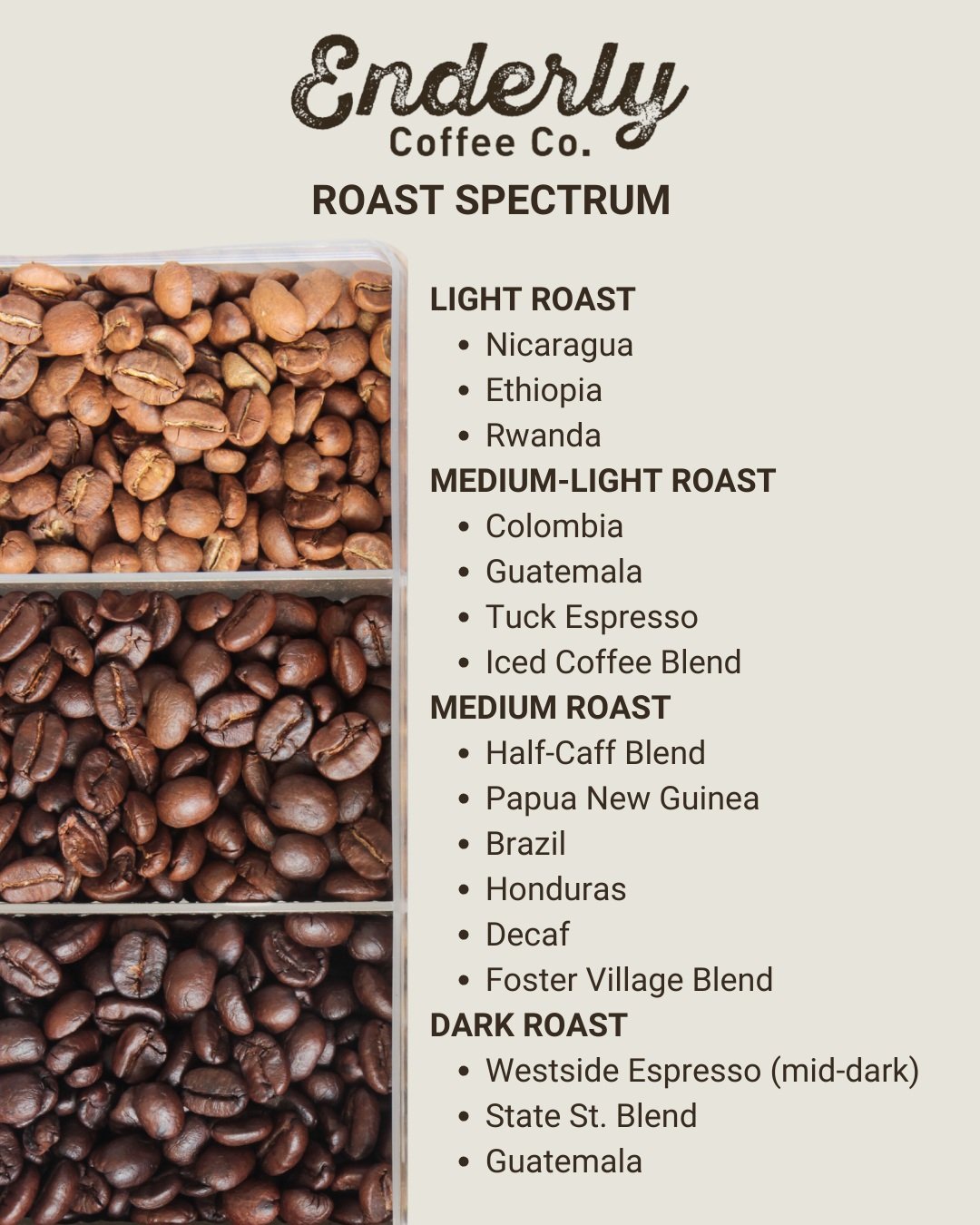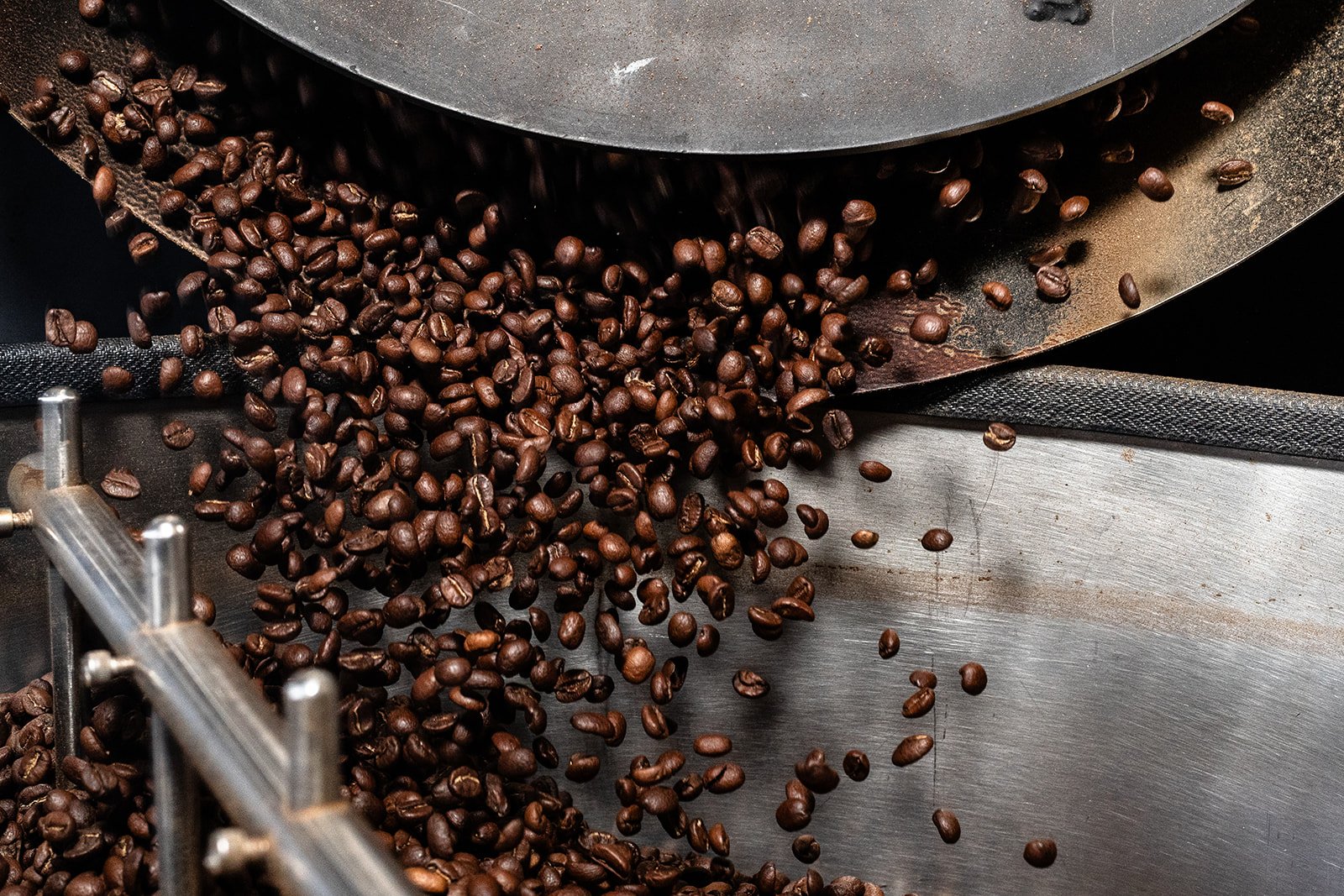Coffee offers a spectrum of flavors, qualities and characteristics that can be manipulated and developed through the roasting process. Whether you prefer your coffee light and vibrant or dark and bold, understanding the differences between light, medium, and dark roasts can help you make a more informed decision the next time you purchase a bag of Enderly coffee beans.
Different roasts bring out different flavor profiles. At Enderly Coffee, we love experimenting to find the best flavor profiles for our bean
To appreciate the differences in coffee roasts, it's essential to understand the roasting process itself. Just like you'd cook a rare steak differently from a well-done one, coffee beans undergo varying degrees of roasting to achieve distinct flavor profiles. The primary factor that separates these roasts is the duration of the roasting process.
Light roasts can be compared to rare steaks. The beans are roasted for a shorter duration and to a lower temperature, allowing their natural characteristics to shine through. Light roasts usually have higher acidity, complexity, and a vibrant taste.
Medium roasts strike a balance between the flavors of the bean and the roasting process. These roasts have a more balanced acidity, sweetness, complexity, and a well-rounded flavor profile.
Dark roasts are the coffee equivalent of a more well-done steak. Roasted for a longer period and higher temperature, dark roasts have lower acidity, less complexity, and a more pronounced bitterness. They even tend to have more body.
Roasters like Enderly have the power to control the roasting style, similar to a chef controlling the doneness of a steak. When we consider how to roast a new batch of coffee, here are a few things going through our minds:
Understanding the Bean
We do a lot of research to gather a deeper understanding of the coffee bean itself, including its moisture content, density, and size. We seek out similar beans (either from our own roster, or by collaborating with our partners) with known characteristics to guide our roasting process.
Experimentation and Learning
We typically roast and taste, adjust, and repeat until we find the ideal roast level for a particular bean. (Don’t worry, during this experimentation process we try hard to make sure no bean goes to waste!) We also never hesitate to seek recommendations from the coffee producers or distributors if we’re looking for guidance on how best to highlight the flavor profile. Ultimately, the more coffee you roast, the more familiar you become with how a coffee might best show its flavor profiles through the roasting process.
Enderly Coffee uses drum machines to rotate and roast the coffee over a controlled heat source
The Roasting Process
The coffee roasters that we use at Enderly are essentially drum machines that rotate over a heat source. We can control factors like the flame size & airflow to manipulate the roast, bringing you a light, medium or dark roast. Real-time data tracking with specialized software helps us make precise adjustments during the roasting process.
Effect on Flavor
The roasting process significantly impacts the flavor of coffee. For quick reference, this is usually what happens to each roasting style:
Light Roast: More acidity, complexity, and brightness.
Medium Roast: Balanced acidity, complexity, and more sweetness.
Dark Roast: Lower acidity, less complexity, and more body.
Caffeine Content
Contrary to popular belief, the caffeine content in coffee generally remains relatively consistent across roast levels (for those of us brewing our coffee by weight, for example weighing 100g of coffee on a scale per batch). The loss of moisture and mass during roasting results in a reduction in weight in a darker roasted coffee bean, but the caffeine concentration generally remains the same.
So, if you aren’t measuring your coffee beans by grams, but rather scooping the beans into your coffee maker (say 3 scoops of coffee per batch rather than measuring the grams of coffee), you will have more caffeine with a light roast coffee because you’ll be actually brewing more beans! Because of the higher density of light roasts, 3 scoops of a light roast will weigh more than the same 3 scoops of a lower density dark roast. More coffee = more caffeine.
Oils in Roasts
Oils are released from coffee beans as they are roasted, with darker roasts producing more oils than lighter roasts. These oils can contribute to a familiar bitter taste in darker roasts, such as French or Italian roasts, which people commonly perceive as acidic… where in fact, lighter roasts will generally be more acidic than darker roasts!
In the world of coffee, roasting is an art form that allows roasters like Enderly to craft a wide range of flavors and profiles, from light and acidic to dark and bold. By understanding the nuances of the roasting process and experimenting with different beans and techniques, we unlock the full potential of your coffee in order to help you discover the roast level that best suits your palate.



